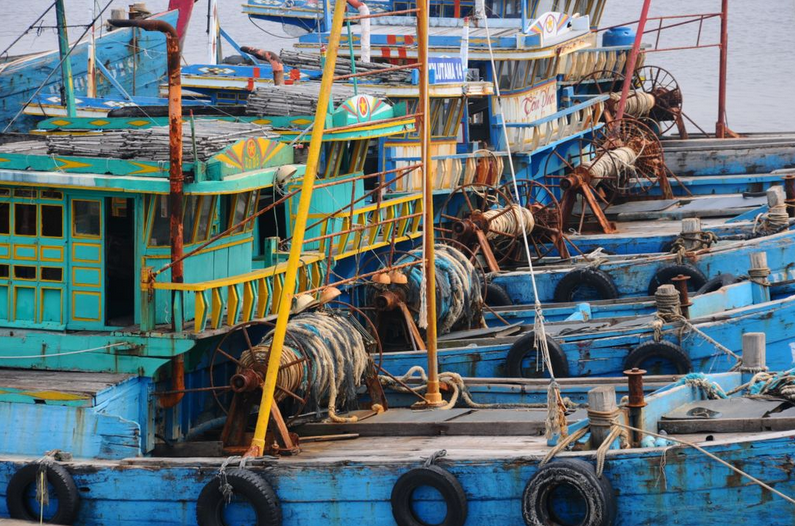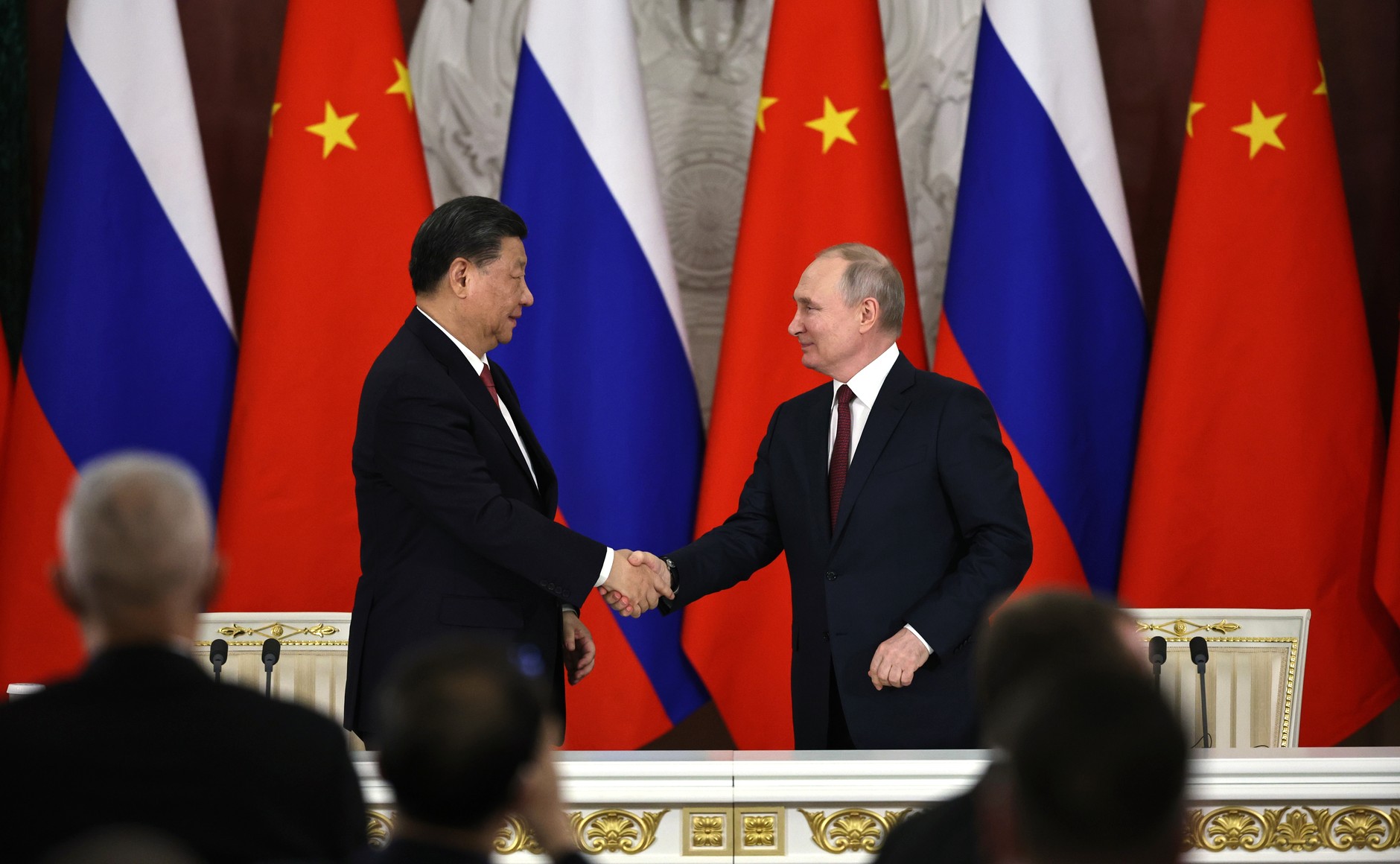
Illegal Fishing in Southeast Asia: Scope, Dimensions, Impacts, and Multilateral Response
Illegal Fishing in Southeast Asia: Scope, Dimensions, Impacts, and Multilateral Response
Introduction
Illegal, unreported, and unregulated fishing (IUUF) has surfaced as an increasingly salient offshore threat in Southeast Asia that is leading to huge losses in government revenue, adversely impacting food security, contributing to widespread environmental damage, destabilizing inter-state relations, and spurring other transnational crimes. It is an enduring challenge that affects much of the region, though it finds particular expression in the South China Sea (SCS), the Gulf of Thailand, and the territorial waters of the Indonesian archipelago.
This article will analyze the scope and dimensions of IUUF in Southeast Asia, assessing its primary drivers, levels of activity, and principal impacts. It will also give an overview of the operations of the People’s Republic of China (PRC)’s distant water fishing (DWF), which several international bodies have decried as not only the single most egregious violator of sovereign fishing rights and laws in the region, but also as a de facto deniable militia that Beijing is using to enforce its self-defined territorial rights in the SCS. Finally, it will look at the “Quad” as a potential multilateral forum for addressing illegal trawling in the wider Indo-Pacific region.
The Scale of IUUF in Southeast Asia
IUUF embraces activities that (1) violate national and international laws; (2) do not fulfil the broader responsibilities of states under the United Nations Law of the Sea Convention to conserve and manage living marine resources; (3) are incompatible with the regulations of a Regional Fishery Management Organization (RFMO); and (4) are either not reported or mis-reported in contravention of domestic legislation or the requirements of a relevant RFMO. [1] As an offense, it can include any of the following practices:
- Operating in another state’s territorial waters without authorization;
- Cheating on access agreements;
- Falsifying catch documents;
- Using banned methods or gears such as micro-mesh nets, explosives and poisons;
- Harvesting protected species;
- Trawling in restricted zones;
- Contravening closed area/season stipulations; and
- Transshipping at sea to avoid landing a haul in the same country a trawler fished it (The Strategist, July 17, 2017).
By its nature, IUUF is difficult to quantify. However, certain metrics of the scale of the problem in Southeast Asia do exist. A commonly cited figure notes that the overall catch per unit effort (CPUE) in the Gulf of Thailand has plummeted by 86 percent since 1966, indicating these waters are among the most overfished on the planet (The Thai Enquirer, April 8, 2021). Various sources claim that pirate trawlers in Southeast Asia account for 2.5 million tons of fish a year, or as much as a third of the regional catch (The ASEAN Post, June 27). Maritime agencies in Indonesia estimate that IUUF costs the archipelagic nation at least $3 billion and possibly as much as $5 billion a year in lost government revenue (Reporting Indonesia, September 10, 2014). Furthermore, analytical models on the current status of fish populations in the SCS—the source of 12 percent of the world’s catch—attribute the 70-95 percent decline in stocks to unregulated trawling (Channel News Asia, February 5, 2022).
Drivers of IUUF in Southeast Asia
The drivers for IUUF in Southeast Asia are multifaceted. Perhaps one of the more important causal factors is the weak fishing regulations of many states in the region. Thailand is a case in point. The country’s 2015 Fisheries Act does not outlaw many destructive practices and merely stipulates that law enforcement (LE) authorities fine—rather than arrest—mariners engaged in illegal trawling or other violations (The Bangkok Post, May 13, 2015).
Additionally, there is a dearth of scientific knowledge in Southeast Asia to inform the development of sound exploitation management models. This is particularly true of statistical information on existing fish stocks, the lack of which has severely impeded the ability of coastal authorities to make informed decisions on sustainable and responsible fishing practices. [2]
Consumer demand for seafood in Asia, Europe, and North America—especially for tuna, cod, mackerel, and squid—has also driven rampant overfishing of these species. Declining supplies have led to a progressive rise in market prices, which has further provided financial incentives to poach. Unfortunately, there is a high degree of ignorance over the adverse impact of such actions, with a growing number of fishermen across Southeast Asia resorting to illegal methods to maximize their catches, which has merely served to further reduce the size of already dwindling populations. [3]
A further consideration is the difficulty of regulating flags of convenience (FoCs), which illicit mariners routinely use to disguise industrial trawlers. Recording requirements in these states [4] do not stipulate the owner has to meet any nationality or residency requirements. The absence of such criteria allows criminal actors to evade inspection and control by continually changing the country under which their vessels are registered—a process known as “flag hopping” (The Food and Agriculture Organization, June 11, 2014).
Finally, many states in Southeast Asia lack the resources to comprehensively patrol and secure their sovereign waters. This is particularly true of archipelagic states such as the Philippines and Indonesia. In the latter instance, Jakarta has responsibility for overseeing 0.3 million square kilometers of territorial sea, 2.8 million square kilometers of archipelagic waters, and 2.7 million square kilometers of exclusive economic zone (EEZ). [5] Yet the country’s premier maritime security agency, BAKAMLA, has a mere 25 coastguard vessels at its disposal (Pacific Front, December 2022), which is completely at odds with the operational area that it has to cover.
Levels of IUUF in Southeast Asia
IUUF in Southeast Asia encompasses several levels. At the low end of the spectrum are mariners trawling in their own waters or in some instances the EEZs of neighboring states to sustain livelihoods unduly affected by the decline of established fishing grounds. The more severe offense is incidental or regular IUUF, which mostly involves fishermen looking to minimize access costs and maximize profits. Most egregious is industrial IUUF carried out by factory trawlers that deliberately set out to contravene national and international laws governing legitimate fishing practices. Regional and international maritime environmental bodies commonly cite the PRC at the forefront of this activity, done largely in an effort to make up for reduced availability of stocks in its own waters (Hong Kong Free Press, March 12, 2022).
Impact of IUUF in Southeast Asia
IUUF in Southeast Asia has had far-reaching effects. It has led to significant economic losses, costing governments across the region billions of dollars in unpaid taxes, landing fees, and export revenue. Relatedly, this criminal enterprise endangers widespread coastal communities that rely on the seas both as a key source of sustenance and as a means for earning money (The ASEAN Post, September 17, 2018). Indonesian President Joko Widodo has cast IUUF as his country’s greatest internal security challenge for precisely these reasons, and between 2014 and 2019 his administration enacted a controversial “sink the boat” policy that involved blowing up pirate trawlers seized in the country’s territorial waters. Overseen by the Minister for Maritime Affairs and Fisheries, Susi Pudjiastuti, Jakarta destroyed well over 500 vessels in this highly visible manner (Seafood Source, November 21, 2019).
Environmentally, illegal and unregulated fishing has caused extensive damage, severely undermining the sanctity of many fragile maritime ecosystems in Southeast Asia. The routine practice of trawling with mechanized “rockhopper” drift nets has been particularly destructive, reducing the topography of the seafloor to a smooth, muddy surface that is incapable of sustaining aquatic life. [6] The use of illegal micro or fine-mesh nets, which can measure as little as 5 millimeters, have been just as harmful, adversely denting the generational sustainability of established seafood stocks by picking up both juveniles in addition to mature fish (Tuoi Tre News, December 24, 2018).
IUUF can also spur other transnational crimes. To cite one such example, intensive IUUF practices often exacerbates human trafficking. Exhausted fish stocks have meant that mariners are venturing farther afield and spending longer periods on the water for ever-diminishing returns. Owner-operators have, as a result, increasingly turned to human slavery as a means for depressing costs, forcing duped or co-opted individuals to work for weeks, months, or even years for little, if any, pay. The practice of transshipment at sea, where reefers resupply factory trawlers offshore with food and fuel, has worsened the problem, effectively transforming these vessels into de-facto floating prisons for abused or indentured laborers. [7]
More broadly, because many illegal operators register their ships under FoCs that generally have extremely lax statutory regulations governing their actual operation, they can easily use these same vessels for other criminal purposes such as drug smuggling, gun running, and sanctions evasion. Given the variability across Southeast Asian states in fisheries management, unscrupulous owner-operators have additionally been able to exploit regulatory loopholes in countries with weak governing structures to set up dummy corporations and shell companies––that they have then used for money laundering and tax avoidance (Maritime Fairtrade, February 22, 2021).
IUUF and the PRC
At an estimated 15,000-17,000 long-haul trawlers, the PRC has the largest DWF fleet of any state in the world. International environmental and fishery bodies routinely cite this “armada,” which some commentators have described as China’s “second navy,” as the international system’s worst violator of sovereign fishing rights and laws. Some of the fishing methods (or equipment) Beijing has employed in Southeast Asia have been especially ruinous. The use of boat propellors to dig up giant clams, for instance, has irreparably destroyed an estimated 100 square kilometers of coral reefs in the SCS (Hong Kong Free Press, March 12, 2022).
Apart from illegal fishing, repeated allegations have charged that Chinese industrial trawlers, working hand-in-glove with associated maritime auxiliary militias, act as a deniable means for enforcing the PRC’s self-defined control over 90 percent of the SCS that it claims as its own (Radio Free Asia, May 1, 2022). [8] There have been repeated instances of these ships directly confronting coastguard and naval units from other claimants in the region—particularly Vietnam and the Philippines—generating growing concern that these clashes could eventually spark a major confrontation in the region.
Though there is no definitive evidence that PRC IUUF is state-sanctioned, several factors do suggest Beijing’s complicity, or at least tolerance, in this criminal enterprise. Many of the DWF vessels sailing in Southeast Asian waters are known to have received generous state subsidies on fuel and shipbuilding equipment that have both incentivized and enabled them to travel overseas to harvest large catches. [9] Additionally, a mere ten companies own nearly half of the country’s long-haul fishing fleet believed to be involved in pirate trawling [10], suggesting that the PRC could, if it wanted, counter and prosecute IUUF. The government’s regulation of its DWF activities is also notably less rigorous of its own domestic fisheries to the extent that it effectively acts as its own FoC for bypassing restrictive controls on extra-territorial trawling. [11]
The Role of the Quadrilateral Security Dialogue’s Indo-Pacific Partnership for Maritime Domain Awareness
In 2022, the Quadrilateral Security Dialogue (aka, the “Quad”)—an informal consultative association between the United States, Australia, Japan, and India—launched the Indo-Pacific Partnership for Maritime Domain Awareness (IPMDA). An integral component of this initiative is to harness and share existing commercial synthetic aperture radar (SAR) satellite data to pinpoint rogue vessels engaged in “dark” shipping and other related tactical-level illicit operations such as rendezvous-at-sea (The White House, May 3, 2022; The Economic Times, May 24, 2022).
The five-year program aims to offer a better alternative to the current regime of tracking offshore mariner activities, which primarily relies on monitoring signals from a ship’s automatic identification system (AIS). Unfortunately, these transponders are not legally mandated for vessels under 300 tons—which many illicit actors routinely use—and owner-operators can easily turn off or spoof them to both give a false geographic reading of their position and shroud any criminal behavior they may be engaged in. These gaps leave regional law enforcement reliant on land-based coastal radar or ships and planes for garnering real-time situational awareness of the vast Indo-Pacific environment. Problematically, the former drops off quickly the farther from shore authorities direct it, while the latter are highly expensive and inefficient means for continuously surveilling large littoral areas (War on the Rocks, May 24, 2022).
Moreover, the small boats and dhows that regional illicit actors use to perpetrate maritime crimes are hard to detect, either by line of sight or signature trace. This is due to their physical size, and the stipulations contained in the globally binding 1972 Convention on the International Regulations for Prevention of Collisions at Sea, which merely require ships under 12 meters in length have some type of lighting and sound-making device to verify their position. These minimal standards make it difficult for maritime agencies to trace and verify suspicious contacts they may hold visually or electronically (The Diplomat, October 11, 2022).
To make up for these various shortfalls, the IPMDA will draw on space-based SAR sensors that image land, marine, and atmospheric features with a high degree of fidelity and spatial resolution, thus allowing for greater granular identification of even small objects independent of weather conditions (AIDASH, n.d.). Importantly, these satellites can also detect vessels that disable or tamper with their AIS, as they pick up and characterize a broad range of wave bands and radio frequencies that all ships use for navigational purposes. The Quad’s four member states will buy this data and share it with partners in the Indo-Pacific by distributing it through information fusion centers in Singapore, India, Vanuatu, and the Solomon Islands (The Economic Times, May 24, 2022; War on the Rocks, May 24, 2022).
The US Department of Transportation’s Sea Vision will act as the connective tissue between these hubs (Roles Insights, March 29). Nearly every nation in the Indo-Pacific uses the platform, which serves as a low-cost web-based visualization and data management tool to augment offshore operations and security. In January 2023, the Biden Administration’s updated National Maritime Domain Awareness Plan specifically highlighted Sea Vision as the preferred means for partner nation unclassified MDA sharing (The White House, January 5).
While the IPMDA offers a potential means for boosting situational awareness in responding to a range of maritime challenges, much of its attention focuses on countering IUUF. This particular threat is inherently difficult to police on account of its transnational character, the diverse nature of the crews that are involved, and as noted, the frequency by which illicit mariners register their trawlers under FoCs. Despite this structural challenge, most countries in the Indo-Pacific view illegal fishing as a major threat and commonly emphasize combating it as a priority. This should ensure a high degree of collective regional buy-in to foster the IPMDA as an effectual means for both delineating pirate trawlers and cueing rapid operational responses to intercept these vessels.
Conclusion
IUUF in Southeast Asia will remain a perennial problem and will likely worsen as already stressed stocks further dwindle from over-exploitation, forcing mariners to fish deeper down the “food chain.” Because much of this criminal activity occurs in the SCS where maritime disputes are already a flashpoint between claimant states, the possibility of illegal trawling leading to a major confrontation will remain an enduring concern. China’s own growing demand for seafood, combined with its continued regional territorial assertiveness, will continue to inform this fear.
By helping to detect, or at least shine a spotlight on the whereabouts of pirate trawlers poaching in the Indo-Pacific, the Quad’s IPMDA has made a potentially significant opening contribution in laying the foundation for a more transparent, rules-based order in the region. The group’s four member states are liable to build on this early progress by developing robust follow-on modalities that help boost partner nation abilities to apprehend and prosecute the crews of these vessels. Support that IPMDA subject matter experts could potentially proffer include training and capacity-building in areas such as forensics, criminal and civil litigation, evidence handling, and counter-network operations. Properly executed, efforts of this kind could serve to deter others from engaging in IUUF, as well as associated transnational offenses and crimes such as human slavery, drug trafficking, and money laundering.
Notes
[1] See, for instance, National Oceanic and Atmospheric Administration (NOAA), 2021 Report to Congress: Improving International Fisheries Management (Washington D.C.: Department of Commerce, August 2021), p. 8, media.fisheries.noaa.gov/2021-08/2021ReporttoCongressonImprovingInternationalFisheriesManagement.pdf.
[2] Kim DeRidder and Santi Nindang, “Southeast Asia’s Fisheries Near Collapse from Overfishing,” The Asia Foundation, March 28, 2018, asiafoundation.org/2018/03/28/southeast-asias-fisheries-near-collapse-overfishing/.
[3] Pirates and Slaves: How Overfishing in Thailand Fuels Human Trafficking and the Plundering of Our Oceans (London: Environmental Justice Foundation, February 25, 2015), p. 11, ejfoundation.org/reports/pirates-and-slaves-how-overfishing-in-thailand-fuels-human-trafficking-and-the-plundering-of-our-oceans.
[4] Over 35 countries run open registries for flagging ships, the most infamous of which is Panama.
[5] Arif Oegroseno, “Indonesia’s Maritime Boundaries,” in Robert Cribb and Michele Ford eds., Indonesia Beyond the Water’s Edge: Managing an Archipelagic State (Singapore: ISEAS-Yusof Ishak Institute, 2009), p. 49, cambridge.org/core/books/abs/indonesia-beyond-the-waters-edge/indonesias-maritime-boundaries/C950A6EAE31A6E58B0B61F94BC60FD8B.
[6] DeRidder and Nindang, “Southeast Asia’s Fisheries Near Collapse from Overfishing.”
[7] Pirates and Slaves: How Overfishing in Thailand Fuels Human Trafficking and the Plundering of Our Oceans, p. 25.
[8] Many of the DWF vessels that Beijing has dispatched to the SCS come from Hainan Province, where they allegedly receive basic military training prior to setting sail for the region.
[9] United States Senate Armed Services Committee, “Statement of Admiral Craig S. Faller, Commander U.S. Southern Command, before the 117th Congress, March 16, 2021, pp. 6-7, .southcom.mil/Portals/7/Documents/Posture%20Statements/SOUTHCOM%202021%20Posture%20Statement_FINAL.pdf?ver=qVZdqbYBi_-rPgtL2LzDkg%3d%3d.
[10] Miren Gutierrez and Guy Jobbins, “China’s Distant Water Fishing Fleet is More Than Five Times Larger Than Estimated – New ODI Report,” ODI, May 26, 2020, odi.org/en/press/chinas-distant-water-fishing-fleet-is-more-than-five-times-larger-than-estimated-new-odi-report/.
[11] Miren Guitérrez and Guy Jobbins., China’s Distant Water Fishing Fleet: Scale, Impact and Governance (London: Overseas Development Institute, June 2020), pp. 8-9, odi.org/en/publications/chinas-distant-water-fishing-fleet-scale-impact-and-governance/; Tabitha Mallory, “China’s Distant water Fishing Industry: Evolving Policies and Implications,” Marine Policy 38 (2013): p. 107, researchgate.net/publications/257163037_China’s_distant_water_fishing_industry_Evolving_policies_and_implications.


